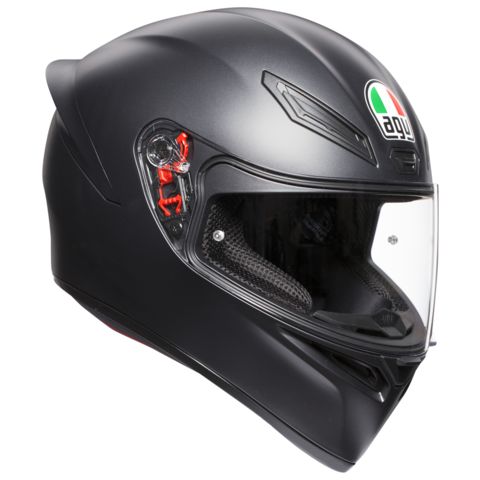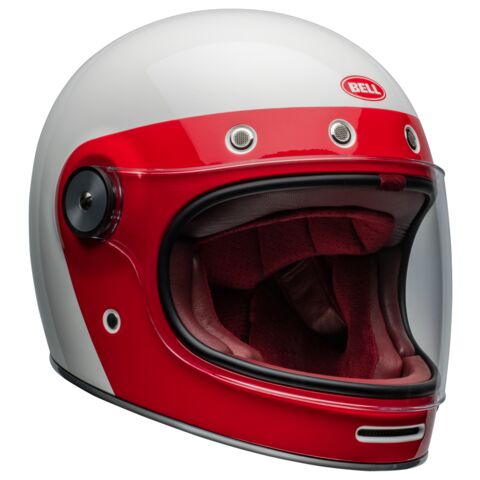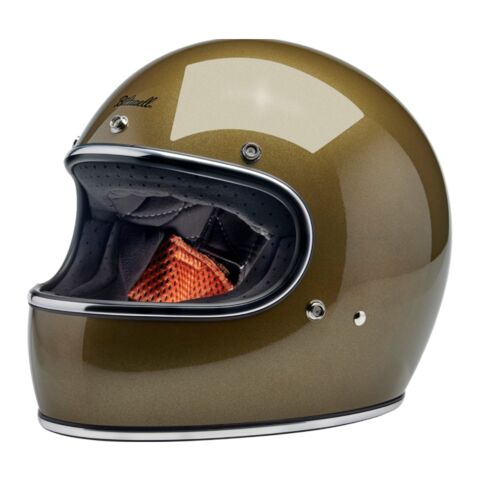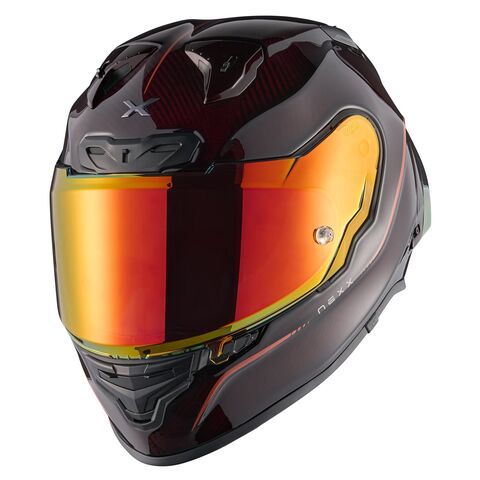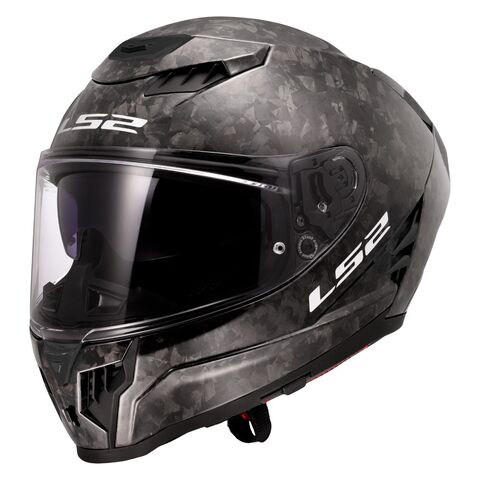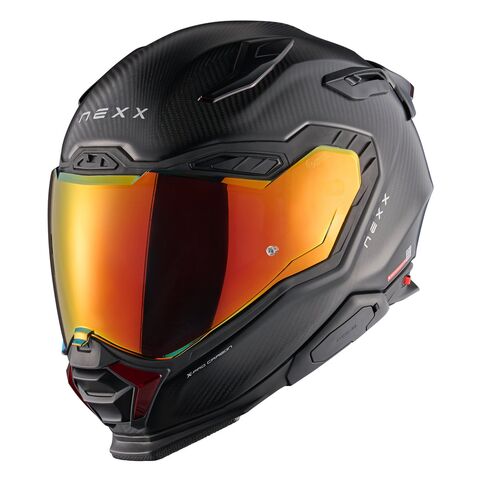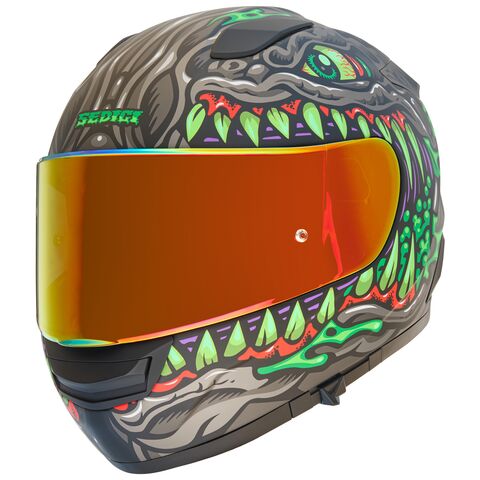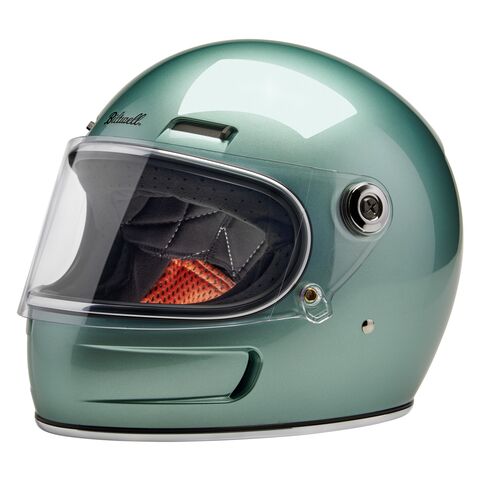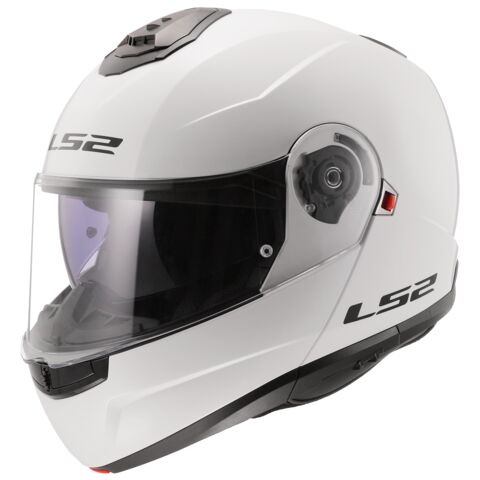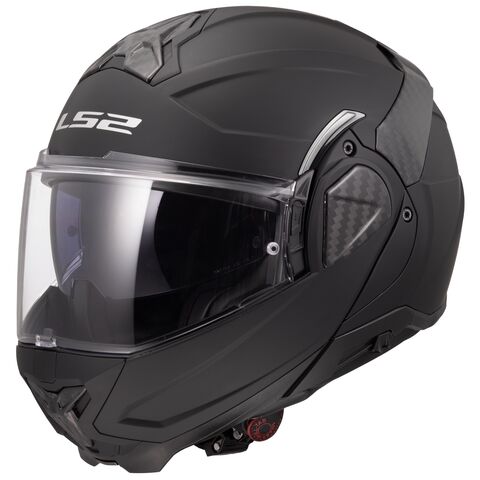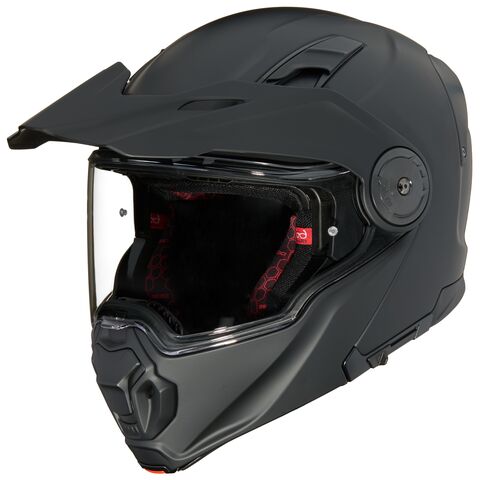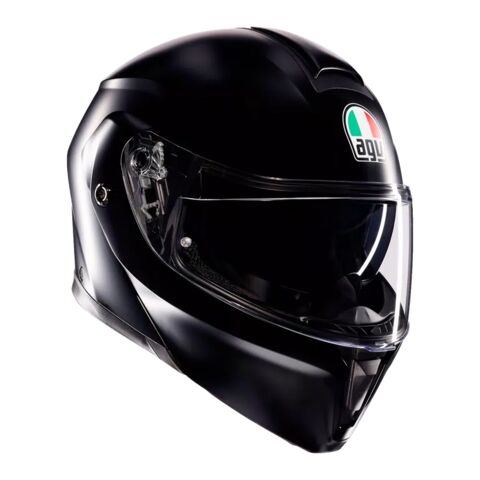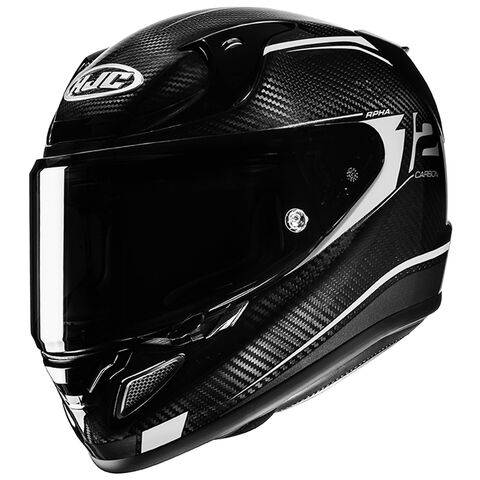ECE Certified Motorcycle Helmets
Filters
- Riders Preferred Membership
- Shop By
- Store Pickup
- Helmet Type
 Full Face
Full Face  Dirt
Dirt  Dual Sport
Dual Sport  Half
Half
- Brand
- 509(33)
- 6D Helmets(24)
- AFX(4)
- AGV Helmets(44)
- Alpinestars(44)
- Answer(8)
- BILT(15)
- Bell Helmets(78)
- Biltwell Apparel(15)
- Cardo Systems(2)
- EVS(2)
- FXR(16)
- Firstgear(3)
- Fly Racing Dirt(49)
- Fly Racing Street(2)
- Fox Racing(39)
- GMAX Helmets(3)
- HJC Helmets(32)
- Icon(52)
- Kini Red Bull(2)
- Klim(30)
- LS2 Helmets(70)
- Leatt(22)
- Nexx Helmets(92)
- Nolan Helmets(1)
- O'Neal(24)
- PCI Race Radios(1)
- Scorpion EXO(52)
- Sedici(28)
- Sena(2)
- Shark Helmets(8)
- Shoei Helmets(15)
- Simpson Helmets(10)
- Speed and Strength(5)
- Thor(15)
- Troy Lee Designs(20)
- Helmet Family
- 509 Altitude 2.0 Helmets(15)
- 6D ATR-2 Helmets(5)
- 6D ATR-3 Helmets(6)
- 6D ATS-1R Helmets(7)
- AGV K1 S Helmets(12)
- AGV K3 Helmets(13)
- AGV K6 S Helmets(5)
- AGV Pista GP RR Helmet(10)
- AGV Streetmodular Helmets(4)
- Alpinestars S-M10 Helmets(12)
- Alpinestars S-M3 Helmets(12)
- Alpinestars S-M5 Helmets(8)
- Alpinestars S-M7 Helmets(7)
- Alpinestars Supertech R10 Carbon Helmet(5)
- Answer AR5 Helmets(1)
- BILT AX-1 Helmet(3)
- BILT Apex Helmets(1)
- BILT Charger Helmets(2)
- BILT LX-1 Helmets(1)
- BILT Lux Helmets(6)
- BILT Route Helmets(1)
- BILT Tour Helmet(1)
- Bell Broozer Helmets(1)
- Bell Bullitt GT Helmets(5)
- Bell Bullitt Helmets(11)
- Bell Custom 500 Helmets(6)
- Bell Eliminator Helmets(5)
- Bell Lithium Helmets(16)
- Bell MX-10 Mips Helmets(15)
- Bell MX-9 Adventure Helmets(9)
- Bell MX-9 Mips Helmets(5)
- Bell Moto-3 Helmets(3)
- Bell Race Star Flex DLX Helmets(1)
- Bell TX501 Helmet(1)
- Biltwell Gringo Helmets(7)
- Biltwell Gringo S Helmets(4)
- Biltwell Gringo SV Helmets(2)
- Biltwell Lane Splitter Helmets(2)
- Fly Racing Dirt Formula CC Helmets(12)
- Fly Racing Dirt Formula CP Helmets(5)
- Fly Racing Dirt Formula Helmets(6)
- Fly Racing Dirt Formula S Helmets(10)
- Fox Racing V1 2023 Helmets(2)
- Fox Racing V1 Helmets(8)
- Fox Racing V3 2023 Helmet(8)
- Fox Racing V3 Helmets(14)
- Fox Racing V3 RS 2023 Helmet(14)
- Fox V1 Core Helmets(2)
- Fox V1 Helmets(15)
- Fox V3 Helmets(17)
- HJC DS-X1 Helmets(1)
- HJC F70 Helmets(4)
- HJC RPHA 12 Helmets(6)
- HJC RPHA 12N Helmets(9)
- HJC RPHA 1N Helmets(8)
- HJC RPHA 60 Helmets(2)
- HJC RPHA Helmets(2)
- HJC i50 Helmets(4)
- HJC i90 Helmets(5)
- Icon Airflite Helmets(14)
- Icon Airform Helmets(17)
- Icon Airframe Helmets(1)
- Icon Airframe Pro Helmets(6)
- Icon Domain Helmets(11)
- Icon Ultraflite Helmets(2)
- Icon Variant Helmets(1)
- Icon Variant Pro Helmets(1)
- Klim F3 Helmets(9)
- Klim F5 Helmets(2)
- Klim Krios Helmets(10)
- Klim TK1200 Helmets(3)
- Klim X1 Alpha Helmets(3)
- LS2 Advant Helmets(1)
- LS2 Advant II Helmets(3)
- LS2 Advant X Carbon Helmets(2)
- LS2 Advant X Helmets(1)
- LS2 Arrow Helmets(1)
- LS2 Assault Helmets(3)
- LS2 Centric Helmets(3)
- LS2 Citation II Helmets(3)
- LS2 Coz Helmets(2)
- LS2 Dragon Helmets(3)
- LS2 Drifter Helmets(1)
- LS2 Explorer Helmets(5)
- LS2 Horizon Helmet(2)
- LS2 Infinity II Helmets(2)
- LS2 Rapid II Helmets(4)
- LS2 Stream II Helmets(4)
- LS2 Subverter EVO Helmets(6)
- LS2 Thunder Carbon Helmets(3)
- LS2 X Force Helmets(6)
- Nexx SX100 Helmets(1)
- Nexx X.Lifecountry Helmet(4)
- Nexx X.Lifetour Helmet(5)
- Nexx X.Rally Helmets(7)
- Nexx X.TR Helmets(5)
- Nexx X.Vilijord Helmets(5)
- Nexx X.Vilitur Helmets(4)
- Nexx X.WED2 Helmets(3)
- Nexx X.WED3 Helmets(10)
- Nexx X.WRL Helmets(2)
- Nexx X.WST3 Helmets(8)
- Nexx XG100 Purist Helmets(2)
- Nexx XG100 Racer Helmets(4)
- Nexx XG30 Helmets(5)
- Nexx XR3R Helmets(13)
- Nexx Y.10 Helmets(6)
- Nexx Y.100 Helmets(1)
- Nexx Y.100R Helmets(5)
- Nexx Y.Travl Helmet(3)
- O'Neal 10 Series Helmet(3)
- O'Neal 2 Series Helmets(3)
- O'Neal 5 Series Helmets(6)
- SS2400 Helmets(3)
- SS2600 Helmets(1)
- SS900 Helmets(1)
- Scorpion EXO Covert FX Helmets(8)
- Scorpion EXO Eclipse Helmets(3)
- Scorpion EXO Ryzer Helmet(4)
- Scorpion EXO-AT960 Helmets(8)
- Scorpion EXO-GT930 Helmets(6)
- Scorpion EXO-R1 Air Helmets(8)
- Scorpion EXO-R330 Helmets(6)
- Scorpion EXO-ST1400 Helmets(2)
- Scorpion EXO-T520 Helmets(3)
- Scorpion EXO-XT9000 Helmets(3)
- Scorpion VX-R70 Helmets(1)
- Sedici Adventure Modular Helmet(1)
- Sedici Duale Helmets(4)
- Sedici Pro Modular Helmets(1)
- Sedici Sistema 3 Helmets(3)
- Sedici Strada 3 Helmets(19)
- Shark Evo ES Helmets(2)
- Shark Race-R Pro Helmets 2013(1)
- Shark Spartan Helmets(3)
- Shark Spartan RS Helmets(1)
- Shoei X-15 Helmets(15)
- Simpson Ghost Bandit Helmets(4)
- Simpson Journey Bandit Helmets(3)
- Simpson Speed Bandit Helmets(1)
- Simpson Xcursion Helmets(2)
- Thor Fleet Helmets(1)
- Thor Reflex Helmets(10)
- Troy Lee Designs GP Helmets(2)
- Troy Lee Designs SE4 Helmets(4)
- Troy Lee Designs SE5 Helmet(2)
- Troy Lee GP Pro Helmets(2)
- Color
- Helmet Shape
 Intermediate Oval
Intermediate Oval
 Long Oval
Long Oval
 Round Oval
Round Oval
- Helmet Safety
- Faceshield
- Category
- Shell Sizes - 1 Shell(8)
- Shell Sizes - 2 Shells(196)
- Shell Sizes - 3 Shells(390)
- Shell Sizes - 4 Shells(120)
- Shell Sizes - 5 Shells(26)
- Shell Sizes - 6 Shells(15)
- Adventure Gear(54)
- Carbon Fiber(231)
- Composite(288)
- Graphic Helmets(635)
- Graphic Helmets - Pop Culture(12)
- Graphic Helmets - Race Replica(40)
- Graphic Helmets - Simplistic(445)
- Graphic Helmets - Wild(92)
- Photochromic(1)
- Polycarbonate(328)
- Solid Color Helmets(228)
- Track Gear(51)
- Apparel Size
- Price Range
- Discount Range
When it comes to motorcycle helmets, ECE certified helmets have long been the gold standard across Europe and beyond. Now updated to the more rigorous ECE 22.06, this safety benchmark means your lid has passed impact tests, chin strap strength checks, and even visor scrutiny. Basically, if it’s ECE-rated, it’s built to keep your brain bucket battle-ready.
ECE vs DOT Certifications
DOT certification is the base standard for street helmets sold in the USA. While their testing leads to helmets that will perform to a high level in a crash, the ECE standards are generally viewed as more stringent and more accurate when it comes to real-world crash conditions, like rotational impact forces.
DOT primarily relies on a self-certification process by manufacturers. This means manufacturers test their own helmets and label them as DOT compliant. The National Highway Traffic Safety Administration (NHTSA) conducts random compliance checks and can issue recalls if helmets fail. ECE, on the other hand, requires independent, third-party testing before helmets can be sold.
Shopping for the World's Safest Motorcycle Helmets
At RevZilla, we take your safety seriously. Our gear geeks eat helmet spec sheets for breakfast, and we're proud to offer one of the widest selections of ECE-rated motorcycle helmets anywhere online. Whether you're carving canyons or commuting in the city, our curated lineup includes top brands like Shoei, Arai, AGV, and beyond—each tested to meet or exceed ECE standards. Because when you're geared up right, the road feels a whole lot more fun (and safe).
What does ECE stand for?
ECE stands for "Economic Commission for Europe." The ECE 22.06 rating is the safety standard used by over 50 countries, primarily in Europe. It's a very rigorous test that's becoming more and more common to see on helmets sold here in the United States, alongside the standard DOT rating.
What's the difference between DOT and ECE?
The biggest difference is the testing process. The DOT standard is a "self-certified" system, where manufacturers attest that their helmets pass. The ECE standard requires batch testing, where helmets are pulled from a production run and sent to an independent lab for testing before they can be sold. Learn more about helmet safety ratings here.
Is ECE 22.06 better than DOT?
Many experts consider the new ECE 22.06 standard to be one of the most comprehensive tests in the world. It tests at different speeds, includes rotational impact tests (measuring twist forces), and even tests accessories like sun visors. It's a very, very tough standard to pass.
Is an ECE-rated helmet legal in the US?
This is the important part: to be "street legal" in the US, a helmet must have a DOT sticker. The good news is that almost every helmet sold in the US that is ECE-certified is also DOT-certified. You'll just see both stickers on the back.
What does the new "22.06" mean?
The "06" is the latest, most modern version of the ECE standard, which replaced the older 22.05. The 22.06 test is much tougher, adding more impact points, a low-speed impact test, and a new test for rotational forces, which are a major cause of brain injuries. It's a big step up in safety.
ECE vs DOT Certifications
DOT certification is the base standard for street helmets sold in the USA. While their testing leads to helmets that will perform to a high level in a crash, the ECE standards are generally viewed as more stringent and more accurate when it comes to real-world crash conditions, like rotational impact forces.
DOT primarily relies on a self-certification process by manufacturers. This means manufacturers test their own helmets and label them as DOT compliant. The National Highway Traffic Safety Administration (NHTSA) conducts random compliance checks and can issue recalls if helmets fail. ECE, on the other hand, requires independent, third-party testing before helmets can be sold.
Shopping for the World's Safest Motorcycle Helmets
At RevZilla, we take your safety seriously. Our gear geeks eat helmet spec sheets for breakfast, and we're proud to offer one of the widest selections of ECE-rated motorcycle helmets anywhere online. Whether you're carving canyons or commuting in the city, our curated lineup includes top brands like Shoei, Arai, AGV, and beyond—each tested to meet or exceed ECE standards. Because when you're geared up right, the road feels a whole lot more fun (and safe).
ECE Rated Motorcycle Helmet FAQ's
What does ECE stand for?
ECE stands for "Economic Commission for Europe." The ECE 22.06 rating is the safety standard used by over 50 countries, primarily in Europe. It's a very rigorous test that's becoming more and more common to see on helmets sold here in the United States, alongside the standard DOT rating.
What's the difference between DOT and ECE?
The biggest difference is the testing process. The DOT standard is a "self-certified" system, where manufacturers attest that their helmets pass. The ECE standard requires batch testing, where helmets are pulled from a production run and sent to an independent lab for testing before they can be sold. Learn more about helmet safety ratings here.
Is ECE 22.06 better than DOT?
Many experts consider the new ECE 22.06 standard to be one of the most comprehensive tests in the world. It tests at different speeds, includes rotational impact tests (measuring twist forces), and even tests accessories like sun visors. It's a very, very tough standard to pass.
Is an ECE-rated helmet legal in the US?
This is the important part: to be "street legal" in the US, a helmet must have a DOT sticker. The good news is that almost every helmet sold in the US that is ECE-certified is also DOT-certified. You'll just see both stickers on the back.
What does the new "22.06" mean?
The "06" is the latest, most modern version of the ECE standard, which replaced the older 22.05. The 22.06 test is much tougher, adding more impact points, a low-speed impact test, and a new test for rotational forces, which are a major cause of brain injuries. It's a big step up in safety.







